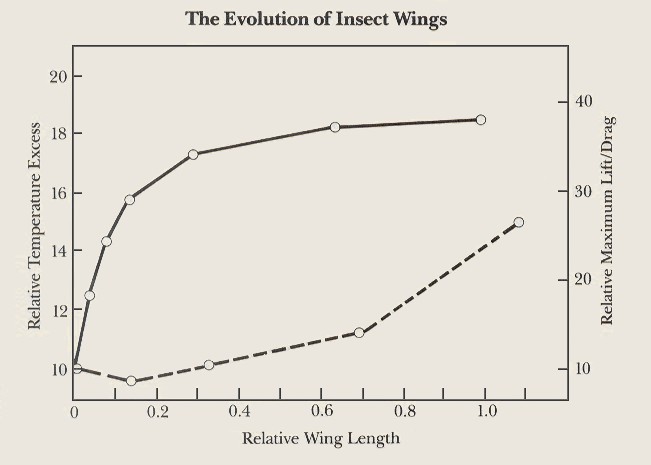
http://www.stephenjaygould.org/library/gould_functionalshift.html
Gould's other big topic is adaptation,
the main point of which is this: what good is
5 percent of wing?
Remember that we said that there is no "higher
goal" of evolution. No set of creatures ever
set out to grow wings in order to be able to
fly and get away from predators.
Gould, among many others, points out that instead
some animals clearly had to evolve 5% of a wing,
10% of a wing, 20% of a wing, and so on, for many
generations.
One day the descendant of those
creatures had evolved 100% of a wing,
was being chased by a predator, and
accidentally flew to escape the predator,
and survived.
This is natural selection or
"survival of the fittest" -- the animal
that had the best wings could survive
the best and propagate this survival trait
to its offspring.
This animal has adapted to having
a wing.
Gould's question is, what good is 5% of a wing?
What caused a line of animals to evolve 5%,
10%, 20% of a wing before it could be used for
flight? Gould argues that such a structure would
have had to had another use besides flight where
5% and 10% had an evolutionary advantage.
Evolving a proto-wing could occur for thermal
regulation, for example -- in other words, for
a reason other than flight. Later, that thermal
regulation feature is adapted for use in flight.
The process of developing a trait for a use other
than what it ultimately will be used for is
called preadaptation -- Gould prefers
to call it exaptation.

http://www.stephenjaygould.org/library/gould_functionalshift.html